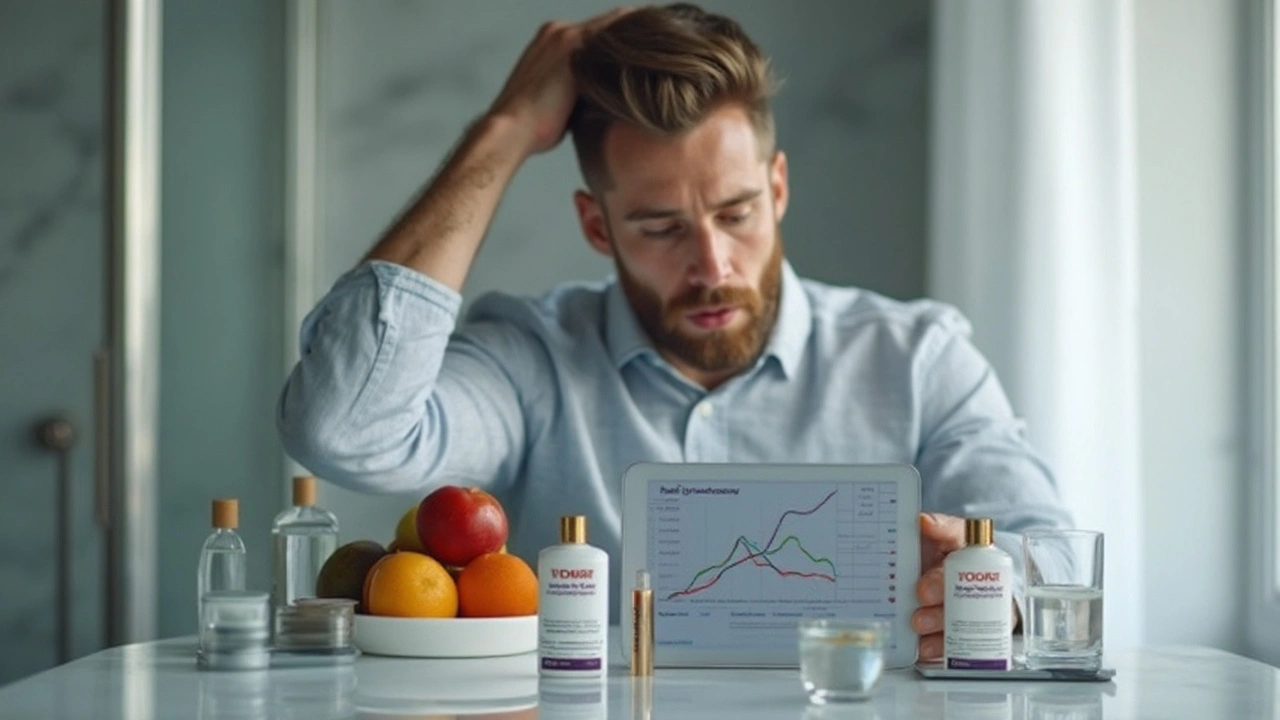Noticed more hair in the shower drain or on your brush? That’s scary, but hair loss has many causes and most are manageable. This guide gives clear, no-nonsense steps you can take right away and explains when you need a doctor.
First, figure out the pattern. A receding hairline and thinning at the crown usually points to androgenetic alopecia (male or female pattern). Sudden, heavy shedding after illness, childbirth, or major stress is often telogen effluvium — usually temporary. Patchy hair loss with red or scaly patches could mean alopecia areata or a scalp infection. Certain medicines and medical conditions — low iron, thyroid problems, and some anticonvulsants or steroids — can also cause thinning. If you notice sudden loss, bald patches, or scalp pain, see a clinician.
Basic checks a doctor may run include a scalp exam, pull test, and blood tests for iron, thyroid, and vitamin D. These simple tests often point to a fixable cause.
There’s no one-size-fits-all cure, but a few options reliably help: topical minoxidil (OTC) can slow loss and stimulate regrowth for many people. Finasteride is effective for men but requires a prescription and a chat about side effects. For pattern hair loss, treatments work best when started early. Other medical options include platelet-rich plasma (PRP) and hair transplant surgery for persistent cases — discuss risks and costs with a specialist.
Daily habits matter. Stop tight hairstyles, lower heat styling, and switch to a gentle brush. Eat enough protein and iron-rich foods — and only take iron or other supplements if tests show you need them. Biotin helps only if you’re deficient; it won’t fix normal shedding. Manage stress with sleep, exercise, or simple breathing techniques — stress-related hair loss often improves within months once triggers are controlled.
For scalp health, consider a medicated shampoo if you have dandruff or inflammation. Ketoconazole shampoos can reduce scalp oil and irritation that worsen shedding for some people. Avoid overdoing chemical treatments like bleaching and strong perms.
Want more reading? Check articles on this site that touch on related issues: “Exploring Effective Alternatives to Isotroin for Acne Treatment,” “Dilantin: Understanding Uses, Side Effects, and Safety,” and “Prednisone Alternatives in 2025.” These explain how some medications can affect hair and what options exist.
Small steps add up. Start with a basic self-check, book a blood test if you suspect deficiency, try minoxidil if you have pattern thinning, and cut back on damaging styling. If hair loss is sudden, patchy, or paired with other symptoms, get medical advice right away.
Need help finding reliable treatment options or reading more about drugs and side effects? RX-Store-24x7.com has easy guides and articles to help you make informed choices.

Searching for fewer side effects than finasteride in 2025? This article explores the best substitutes for hair loss: low-dose dutasteride, ketoconazole shampoo, and smart lifestyle changes. Find real numbers, actionable tips, and science-backed insights into managing hair loss for men who want options beyond the usual prescription. All facts, no fluff—delivered with clarity. Get to know what actually works and how to reduce risks.
More